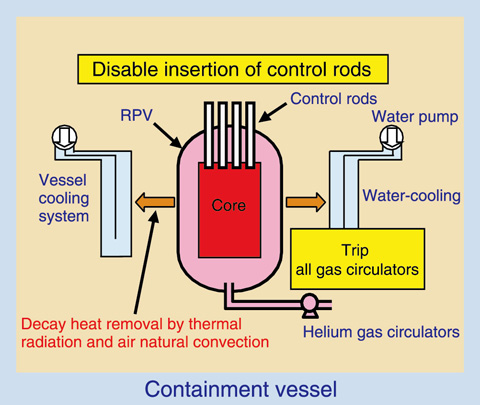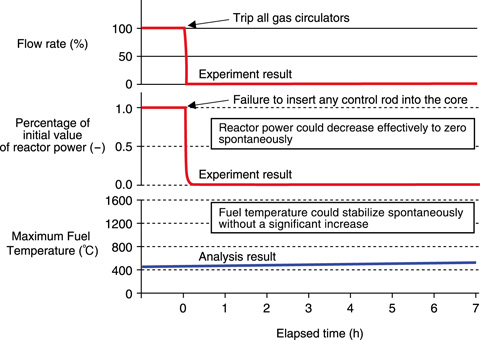Table 9-1 Conditions and results of safety demonstration tests using the HTTR


Fig.9-3 Outline of safety demonstration tests using the HTTR

Fig.9-4 Transients of coolant flow rate, reactor power, and maximum fuel temperature
In a safety demonstration test involving a loss of both reactor reactivity control and core cooling, HTGRs such as the HTTR, which is the only HTGR in Japan, demonstrate that the reactor power would stabilize spontaneously (Table 9-1). In the test at an initial power of 30%, when the insertion of all control rods was disabled and all gas circulators were tripped to reduce the coolant flow rate to zero, a reactor transient was initiated and examined. The results confirmed that the reactor power would decrease immediately and become effectively zero (Fig.9-3, Fig.9-4). This reactor behavior occurred because the temperature of U-238 in the fuel increased, which increased the absorption rate of neutrons caused by the Doppler effect, immediately stopping the fission chain reaction.
Although the reactor coolant flow rate dropped to zero and the decay heat was being generated, the fuel temperature did not show a large increase because the large heat capacity of the graphite core absorbed heat from the fuel in a short period. Over a longer period, some decay heat was conducted through the reactor pressure vessel wall and was emitted by thermal radiation from the outer surface of the reactor pressure vessel.
In the accident at the TEPCO’s Fukushima Daiichi NPS Unit 1 caused by the Great East Japan Earthquake and Tsunami, the control rods were successfully inserted into the core, and the reactor was shut down; however, the decay heat could not be removed because core cooling was lost as soon as the station blacked out. This resulted in the core meltdown, hydrogen generation, and explosion of hydrogen in the reactor buildings, causing a release of a large amount of radioactive material into the atmosphere.
In contrast, even though no control rods were inserted into the core, the reactor power of the HTTR can be effectively reduced to zero. Moreover, despite tripping all gas circulators and losing core cooling, real HTGRs such as the HTTR, demonstrate that the decay heat can be removed; the core was never exposed to the danger of a meltdown, and the reactor power stabilized spontaneously (Fig.9-4).
We plan to perform more safety tests, including tripping the vessel cooling system, to test the removal of decay heat from the core to the ground as the final heat sink.